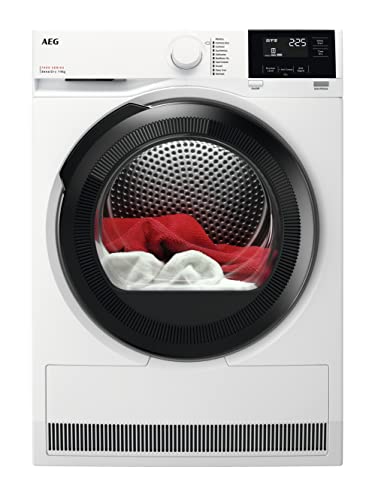Is Your Company Responsible For The Tumble Dryers Heat Pump Budget? 12…
작성일 24-03-02 12:33
페이지 정보
작성자Dora 조회 13회 댓글 0건본문
Tumble Dryers Heat Pump
Tumble dryers with heat pump make use of clever technology to be energy efficient gentle on fabrics and cost-effective in the long run. Since they don't require vents, unlike condensers and vented models, you can put them wherever you want in your home.
The benefits of tumble dryers equipped with heat pumps are far greater than the slight disadvantages.
Energy efficiency
The heat pump dryers are the latest generation of dryers that operate by recycling energy instead of making it. The technology is similar to a fridge, but the appliance's insides are reversed. Rather than generating the heat with heating elements, refrigerants absorb heat from the outside air and then pumps it into the drum, which is filled with wet clothes. When the refrigerant has reached a low temperature, it extracts the moisture from the warm air and then releases it into an empty storage tank or drain. The warm air, and then transports the humidity back into the tumbling cycles, consuming less energy.
The lower temperatures of heat pump dryers means that they are gentler on clothing and also stop excessive shrinkage and wear. They use less electricity and save families with high electric bills hundreds of pounds per year.
A typical family in the US is able to do 20 loads of laundry each week. The savings could be substantial. A dryer with a heat pump can cut those costs by up to one-third according to the Massachusetts Clean Energy Center, which is one of the top energy efficiency advocates.
You can also lower your energy costs by not overloading your tumble dryer. Keeping your laundry load smaller will increase the efficiency of your machine and enable it to complete each cycle in as short as possible time without sacrificing quality.
Tumble dryers with the heat pump system use three times less energy than conventional air-ventilated clothes dryers and meet the new EU Ecodesign and energy labelling requirements that will be in effect starting in July 2025. The requirements are intended to assist European households save up to 15 TWh of energy in 2040.

Tumble dryers with heat pump make use of clever technology to be energy efficient gentle on fabrics and cost-effective in the long run. Since they don't require vents, unlike condensers and vented models, you can put them wherever you want in your home.
The benefits of tumble dryers equipped with heat pumps are far greater than the slight disadvantages.
Energy efficiency
The heat pump dryers are the latest generation of dryers that operate by recycling energy instead of making it. The technology is similar to a fridge, but the appliance's insides are reversed. Rather than generating the heat with heating elements, refrigerants absorb heat from the outside air and then pumps it into the drum, which is filled with wet clothes. When the refrigerant has reached a low temperature, it extracts the moisture from the warm air and then releases it into an empty storage tank or drain. The warm air, and then transports the humidity back into the tumbling cycles, consuming less energy.
The lower temperatures of heat pump dryers means that they are gentler on clothing and also stop excessive shrinkage and wear. They use less electricity and save families with high electric bills hundreds of pounds per year.
A typical family in the US is able to do 20 loads of laundry each week. The savings could be substantial. A dryer with a heat pump can cut those costs by up to one-third according to the Massachusetts Clean Energy Center, which is one of the top energy efficiency advocates.
You can also lower your energy costs by not overloading your tumble dryer. Keeping your laundry load smaller will increase the efficiency of your machine and enable it to complete each cycle in as short as possible time without sacrificing quality.
Tumble dryers with the heat pump system use three times less energy than conventional air-ventilated clothes dryers and meet the new EU Ecodesign and energy labelling requirements that will be in effect starting in July 2025. The requirements are intended to assist European households save up to 15 TWh of energy in 2040.

댓글목록
등록된 댓글이 없습니다.